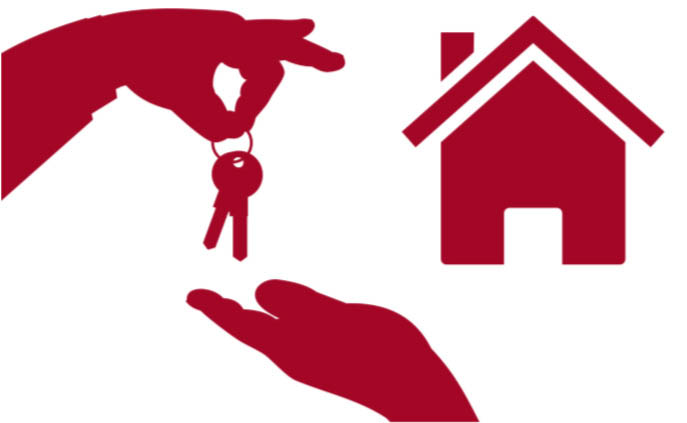Author: Igor Nastaskin
Do’s and Don’ts of Selling Your Home in 2017
Plan to sell your home in 2017? According to Realtor.com, certain blunders can hurt a homeowner’s odds of selling their residence. Here, some tips to follow when placing your property on the market. Don’t over-improve your home. Homeowners often assume that any upgrades they make will pay them back in full once they sell. That’s rarely the case. On average, you will recoup only about 64 percent of the money spent on renovations once your home sells — and certain improvements actually can work against you if they’re unusual or undesirable in your market. For example, you might consider a new swimming pool a plus, but many homeowners don’t want the hassle of maintaining it. Do check out a remodeling magazine’s cost versus value report to determine which upgrades provide the best return.You also can ask a Realtor for advice on which amenities are desirable (or nor) in your area Don’t renovate without permits. Failing to apply for permits before you knock down a wall or add a deck can come back to haunt you when you decide to sell. Without proper permits, buyers may worry whether the work done on your place is up to code, and as a result, refrain from making an offer. Do pull necessary permits. Building permits usually are required for any renovation that involves opening/building walls, electrical and plumbing changes. Don’t limit showing hours. Buyers are busy juggling work, family and looking for a new home. If you limit showings to a few hours on weekends, you might miss a potential sale. Do stay flexible. Cooperate with buyer’s agents who want to show your house, even if it’s inconvenient. Limiting showing times gives buyers the impression that the sellers will be difficult. Don’t overlook curb appeal. Although you lavish tons of attention on preparing the inside of your home for buyers, it’s easy to overlook the outside. Keep in mind that curb appeal is the first impression buyers have of your home, so it also pays to put some elbow grease into beautifying the exterior. Do make sure your paint job is pristine and your lawn is tidy and mowed. Be sure to replace any dead shrubs, prune trees, put out some potted plants, mulch garden beds and freshen your mailbox. Don’t rely heavily on open houses. While open houses once were a great way to sell a house, the vast majority of houses today are sold via the Internet. Do hold open houses, but don’t depend on them too much. Try to seek out agents who mine for buyers by using the Internet and social media. Don’t neglect to follow your agent’s advice. You might know more about your home than anyone else, but your real estate agent knows more about how to sell it. Your agent might make some suggestions you won’t like to hear — such as you need a new paint job or that the asking price you had in mind needs to be lowered a bit — but if you ignore your agent’s advice, you could risk seeing your house sit on the market and grow stale. Do listen to your agent. When it comes to pricing, consider the comps your agent presents. Agents buy and sell hundreds of houses in their career. You’re paying for their experience, so follow their advice.
Housing Value at Record-High
Housing’s collective value grew to $29.6 trillion in 2016 — a record high reflecting 5.7 percent appreciation (an additional $1.6 trillion), according to a recently released analysis by Zillow. The most valuable housing markets in the nation are in Los Angeles, New York and San Francisco, Calif., at 8.6 percent, 8 percent and 4.2 percent, respectively. The continuing growth in prices, however, has the potential to push more prospective homebuyers to the sidelines, says Zillow Chief Economist Dr. Svenja Gudell. “Housing is incredibly important to us personally and to the economy as a whole,” says Gudell. “The U.S. housing stock is worth more than ever, which is a sign of the ongoing housing recovery. As buying a home gets more expensive, affordability remains a concern for many, and these numbers highlight just how much people are spending on housing. The total value of the housing stock grew nearly 6 percent this year, a pace that will likely mean some American families are priced out of homeownership.” Despite this year’s appreciation, about 60 percent of housing markets remain below values reached during the bubble years, according to the analysis. Renters, to compare — with about 635,000 new renter households formed this year — paid $478.5 billion in 2016, up $17.7 billion from 2015. Apartment renters paid $50 billion more than single-family home renters, and the most rent was paid in New York and Northern New Jersey, at $55 billion.
Five Big Real Estate Trends to Watch in 2017
The election of real estate magnate Donald Trump as president likely will bring some dramatic changes in 2017 for the housing industry, which saw healthy increases in values this year thanks to low interest rates, lower gas prices, stronger wage growth and millennials entering the market. According to MarketWatch, here are five things to watch for in real estate in 2017. Drones Commercial use of unmanned aerial vehicles (UAVs), or drones, in 2017 has been cleared for takeoff by the Federal Aviation Administration, and the use of drones by the real estate industry likely will expand dramatically next year. While the use of drones to create flyovers of properties for real estate agents began to rise this year, home buyers and sellers will be able to use them as well by next year, as operators will no longer need a commercial pilot’s license to fly. However, some flights will need the FAA’s or local tower permission, along with a flight plan filed online. Prices for high-quality drones also are expected to drop to as little as $500, although drones with higher-end features — such as gyro-stabilized platforms that help steady the video images — still will still run $1,000 to $1,200. Not ‘mixed-use’ but ‘surban’ There’s been plenty written about the move from suburban-style sprawl to denser communities of different housing arrangements, such as town houses, apartments and single-family homes, together in the same neighborhoods. In 2017, look for a new name for it: “surban” — a blend of urban and suburban living. More existing suburban neighborhoods are adding urban amenities so people can live, work and play right outside of the core part of the city. Nearly 80 percent of residential growth is expected to occur in suburban communities during the next 10 years — up from 71 percent from 2010 to 2015 — compared with just 15 percent for “urban” areas through 2025. Forget the starter home, millennials want the move-up property More millennials — roughly, those born between the early 1980s and the late ’90s — are expected to buy a first home in 2017, according to the National Association of Realtors (NAR). Many of those buyers have saved enough to go with something more than a condo unit or a starter home, says Jessica Lautz, managing director for research at NAR. And with the markets doing so well, and interest rates as low as they are, millennials who have paid down their student debt and built up their cash may be in a position to buy more house than real-estate agents might think, she adds. Indeed, the NAR notes that in 2016, 17 percent of buyers under 35 were able to save enough for a down payment for a home within a year, compared with 14 percent of all age groups. And though it was lower than all other age groups, 37 percent of buyers ages 35 and younger said they were able to save enough for a down payment within six months, compared with 46 percent of all other buyers. How Trump’s win could change real estate Fears of recession could grow with a likelihood that Trump would cut government spending dramatically in his first year, and stock-market uncertainty increasing over just how his presidency will begin. As such, another year of low interest rates could be in the cards. Many experts see a Trump presidency being good for the housing and mortgage markets in the long term. Commitments to bringing regulatory relief — and regulatory certainty — to the financial-services industry should make more credit more available to average home buyers who have been locked out of the market by today’s tight credit standards. As a result, home buying should remain strong in 2017, which is good news for a market with low inventory. Start thinking about Generation Z It won’t be long before Gen Z reaches the market. They’re teenagers now, but this demographic is almost on the cusp of being able to buy homes, with the first Gen Z–ers reaching their 18th birthdays in 2017. According to the NAR, Gen Z will come of age with low interest rates, better job prospects and higher wages to help cushion the high costs of college education.
Number of Older Adults in the U.S. Expected to Surge, Highlighting the Need for Accessible Housing
By 2035, more than one in five people in the U.S. will be 65 and older and one in three households will be headed by someone in that age group, according to Projections and Implications for Housing a Growing Population: Older Adults 2015-2035, a new report conducted by the Harvard Joint Center for Housing Studies. This growth, the report says, will increase the demand for affordable, accessible housing that is well connected to services beyond what current supply can meet. According to the report, as the baby boomer generation ages, the U.S. population age 65 and older is expected to grow from 48 million to 79 million, and the number of households headed by someone 65 and older will increase by 66 percent, to nearly 50 million. This growth will increase the demand for housing units with universal design elements such as zero-step entrances, single-floor living, and wide halls and doorways. However, only 3.5 percent of homes offer all three of these features. “The housing implications of this surge in the older adult population are many and call for innovative approaches to respond to growing need for housing that is affordable, accessible and linked to supportive services that will grow exponentially over the next two decades,” says Chris Herbert, managing director of the Harvard Joint Center for Housing Studies. In the coming years, many older adults will have the financial means to pay for appropriate housing and supportive services that allow them to live longer in their own homes. However, many others will face financial hardships, particularly because their incomes will decline in retirement. Low-income renters are particularly vulnerable, notes the report, which projects that nearly 6.4 million low-income renters will be paying more than 30 percent of their income for housing by 2035. The report adds that 11 million homeowners also will be in this position by that time. In total, the report estimates, 8.6 million people will be paying more than half of their income for housing by 2035. The report also projects that 7.6 million older adults will have incomes that would qualify them for federal rental subsidies by 2035, an increase of 90 percent from 2013. “Today, however, we only serve one-third of those who qualify for assistance,” says Jennifer Molinsky, a senior research associate at the Joint Center and lead author of the report. “Just continuing at this rate — which would be a stretch — would leave 4.9 million people to find affordable housing in the private market.” In many surveys, older adults express a strong desire to live at home for as long as possible. Achieving that goal will require public and private action to support modifications to existing homes; steps to address the affordability challenges facing both owners and renters; and adapting the health-care system to enhance service delivery in the home. There also is a need to expand the range of housing options available to better meet the needs of an aging population and to improve options for older adults to remain in their community when their current home is no longer suitable. “Right now, more than 19 million older adults live in unaffordable or inadequate housing, and that problem will only grow worse in the next two decades as our population ages,” says Lisa Marsh Ryerson, president of AARP Foundation, which provided funding for the report. “This important follow-up study to Harvard’s ground- breaking 2014 report on housing America’s older adults not only calls attention to important trends but also helps point to the kind of solutions — requiring cross-sector collaboration between the housing industry, policymakers, and public, private and philanthropic organizations — that will fulfill older adults’ ardent desire to continue living independently at home with security and dignity.”
Should Millennials Buy a Home or Rent?
Home ownership has reached a five-decade low, according to a recent report by the U.S. Census Bureau. This is due partially, the report says, to the fact that millennials have historically low ownership rates compared with other generations. Why aren’t more millennials willing to purchase a place to call home? Should they purchase homes or is it smarter for them to rent? GoodCall asked industry experts to weigh in on the trend of young professionals choosing to rent instead of buy. Here’s what the consumer-focused website discovered. • Buying may be more advantageous than renting for millennials who may be thinking about future family plans, says Bill Golden, an independent real estate agent with RE/Max Metro Atlanta Cityside. “If you’re planning on expanding your family, and the market is attractive for buyers, it may make sense to stretch a bit and buy a home now that would be suitable for a growing family,” he says • If not, Golden says you’re wasting money on rent and also guessing on the type of market you will encounter when you decide to enlarge your family and search for a house. • If you’ve allocated a specific amount to spend each month, Golden explains that you’ll need to decide the best way to spend it. “Depending on where you are looking to live, that may mean renting a three-bedroom, two-bath house with a yard, or buying a one-bedroom condominium,” he says. If you have a dog, for example, you should consider whether you would prefer to just open the door and let him out into the yard, or if you want to go through the hassle of walking him on a leash every time he needs to go outside. • For investment-minded millennials, Golden says they might consider whether their home should be one of their investments, or whether they’re throwing away money in rent that could be used for investing. “Of course, it’s also extremely important to remember that, in buying a home, you are building equity as time goes by, both by paying down on your mortgage, and hopefully, through appreciation of the property,” he says. • While some millennials may not want to purchase a home, many simply are not able to because of debt. Robyn Gilson, coach for Financial Education and vice president of Customer Experience at U.S. Bank, says that lingering debt and financial worries play a critical role in the home-buying decision. “Despite millennials’ well-publicized low rate of homeownership, our index found 76 percent feel being able to save for a home remains important to achieving an ideal home life — but only 37 percent feel satisfied in their ability to save.” • Gilson also says that any millennials who are thinking about purchasing a home will need to understand and then start building their credit score so they can qualify for a mortgage when the time comes. • Perceived job security is another contributing factor, according to Matthew Carbray, certified financial planner and managing partner of Ridgeline Financial Partners LLC and Carbray Staunton Financial Partners in Avon, Conn. “And, financially speaking, one needs ample money for a down payment, pre-paid items at a closing like property taxes, and also insurance and renovations,” says Carbray. • Even if you have a stable income, your home shouldn’t eat up all of your money. “If it would take every penny of your savings to make a down payment on a home, and you’re not certain of your ability to replenish that in the future, you may want to factor that into your decision,” Golden says. “There are many loan programs out there that can help first-time home buyers with down-payment assistance, or that don’t require a severed arm and leg to get a mortgage,” he adds. However, millennials should also consider their comfort level with the final estimate. Golden recommends getting pre-qualified for a mortgage. “That will enable you to make a more accurate comparison of what you can get for that money in a purchase versus a rental,” he says. • So, how much should millennials feel comfortable paying? “I typically recommend that prospective buyers put down no less than 20 percent of the purchase price, not only to avoid triggering the private mortgage insurance requirement, but also to secure reduced interest rates and closing costs, smaller monthly payments and instant home equity,” says Laurie Samay, a certified financial planner and client service and portfolio manager with Palisades Hudson Financial Group in Scarsdale, N.Y.








